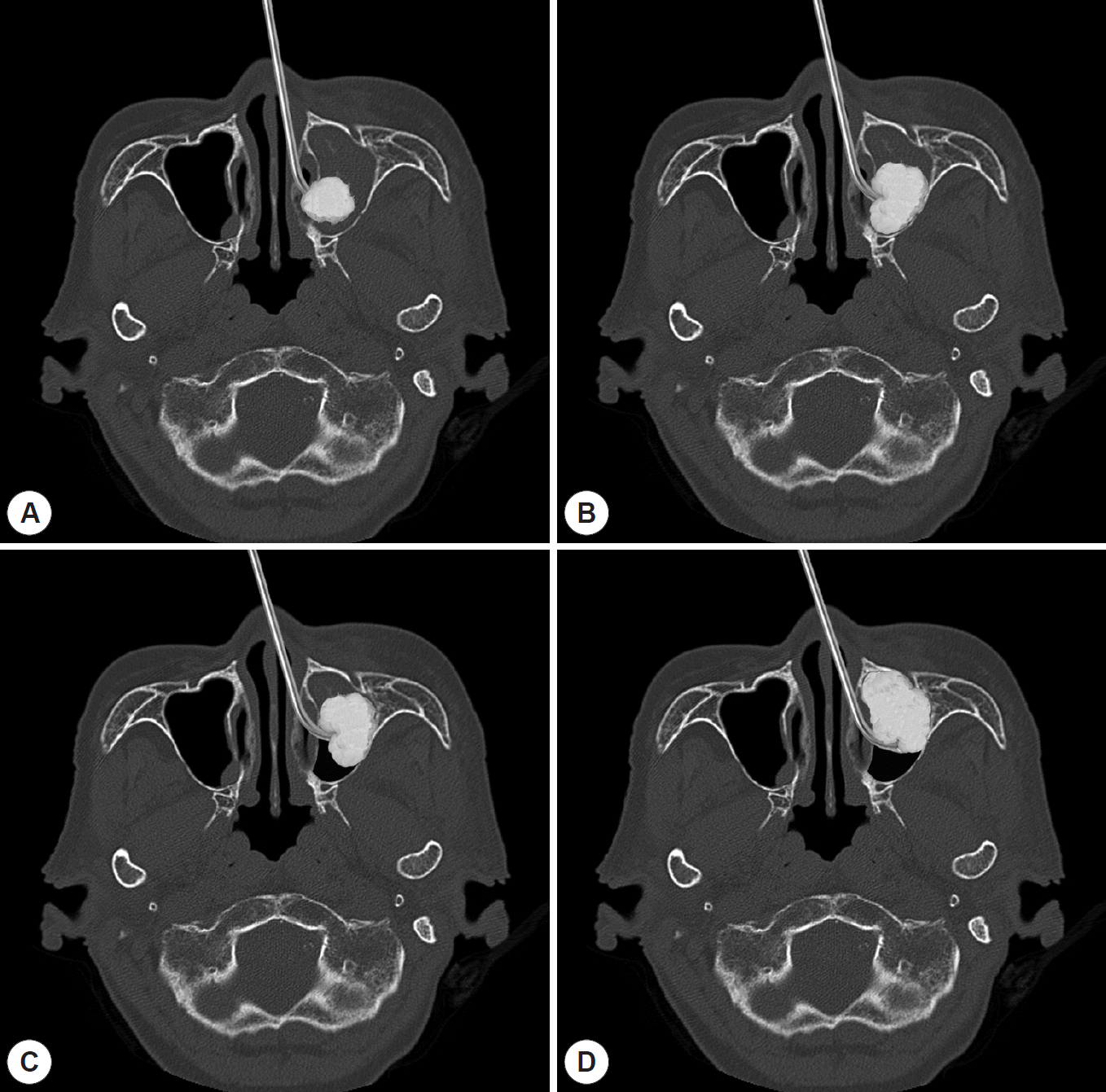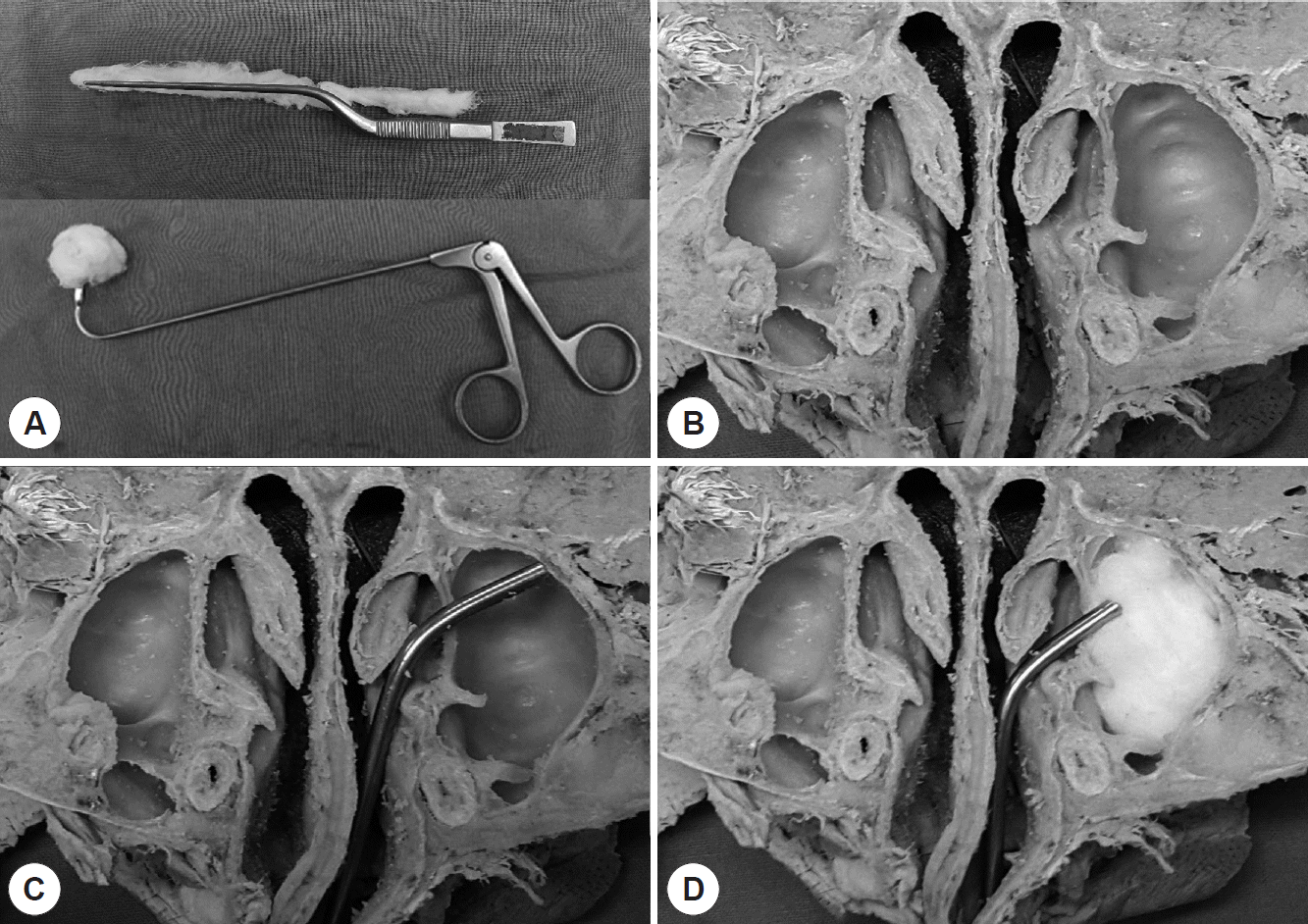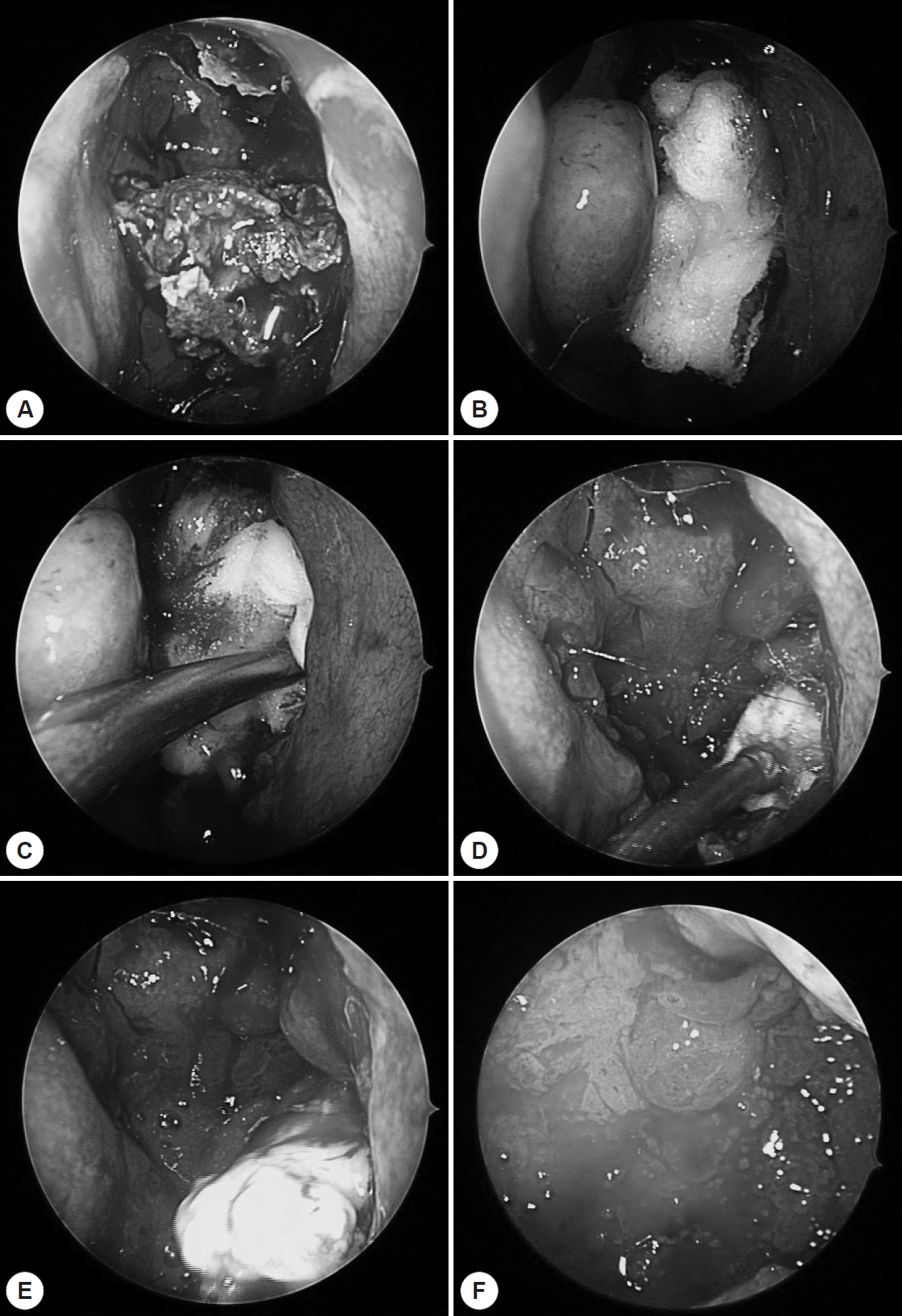1. Dufour X, Kauffmann-Lacroix C, Ferrie JC, Goujon JM, Rodier MH, Karkas A, et al. Paranasal sinus fungus ball and surgery: a review of 175 cases. Rhinology. 2005; 43(1):34–9.
2. Jiang RS, Hsu CY. Serum immunoglobulins and IgG subclass levels in sinus mycetoma. Otolaryngol Head Neck Surg. 2004; 130(5):563–6.
3. Butaric LN. Differential Scaling Patterns in Maxillary Sinus Volume and Nasal Cavity Breadth Among Modern Humans. Anat Rec (Hoboken). 2015; 298(10):1710–21.
4. Penttila MA, Rautiainen ME, Pukander JS, Karma PH. Endoscopic versus Caldwell-Luc approach in chronic maxillary sinusitis: comparison of symptoms at one-year follow-up. Rhinology. 1994; 32(4):161–5.
5. Costa F, Polini F, Zerman N, Robiony M, Toro C, Politi M. Surgical treatment of Aspergillus mycetomas of the maxillary sinus: Review of the literature. Oral Surgery, Oral Medicine, Oral Pathology, Oral Radiology, and Endodontology. 2007; 103(6):e23–9.
6. Costa F, Polini F, Zerman N, Sembronio S, Toro C, Politi M. Functional endoscopic sinus surgery for the treatment of Aspergillus mycetomas of the maxillary sinus. Minerva Stomatol. 2008; 57(3):117–25.
7. Klossek JM, Serrano E, Peloquin L, Percodani J, Fontanel JP, Pessey JJ. Functional endoscopic sinus surgery and 109 mycetomas of paranasal sinuses. Laryngoscope. 1997; 107(1):112–7.
8. Yang HC, Kim YY, Jin SM, You H, Han JH, Nam KI. Transnasal endoscopic ultrasound-guided reduction of maxillary sinus wall fracture. Eur Arch Otorhinolaryngol. 2017; 274(9):3383–90.
9. Yang HC, Kang SH, Yoon SH, Cho HH. Transnasal endoscopic removal of bilateral postoperative maxillary cysts after aesthetic orthognathic ssurgery: Differences from that of Caldwell-Luc operations. Auris Nasus Larynx. 2018; 45(3):608–12.
10. Chao TK, Liu CM. Gauze-assisted technique in endoscopic removal of fungus balls of the maxillary sinus. Am J Rhinol. 2006; 20(4):417–20.
11. Garofalo P, Griffa A, Dumas G, Perottino F. “Gauze Technique” in the Treatment of the Fungus Ball of the Maxillary Sinus: A Technique as Simple as It Is Effective. Int J Otolaryngol. 2016; 2016:4169523.
12. Kennedy DW, Zinreich SJ, Shaalan H, Kuhn F, Naclerio R, Loch E. Endoscopic middle meatal antrostomy: theory, technique, and patency. Laryngoscope. 1987; 97(8 Pt 3 Suppl 43):1–9.
13. Shams MG, Motamedi MH. Aspergilloma of the maxillary sinus complicating an oroantral fistula. Oral Surg Oral Med Oral Pathol Oral Radiol Endod. 2003; 96(1):3–5.
14. Thery A, Espitalier F, Cassagnau E, Durand N, Malard O. Clinical features and outcome of sphenoid sinus aspergillosis: A retrospective series of 15 cases. Eur Ann Otorhinolaryngol Head Neck Dis. 2012; 129(4):179–84.
15. Campbell MJ, Clayton YM. Bronchopulmonary aspergillosis. a correlation of the clinical and laboratory findings in 272 patients investigated for bronchopulmonary aspergillosis. Am Rev Respir Dis. 1964; 89:186–96.
16. Dufour X, Kauffmann-Lacroix C, Ferrie JC, Goujon JM, Rodier MH, Klossek JM. Paranasal sinus fungus ball: epidemiology, clinical features and diagnosis. A retrospective analysis of 173 cases from a single medical center in France, 1989-2002. Med Mycol. 2006; 44(1):61–7.
17. deShazo RD, O’Brien M, Chapin K, Soto-Aguilar M, Swain R, Lyons M, et al. Criteria for the diagnosis of sinus mycetoma. J Allergy Clin Immunol. 1997; 99(4):475–85.
18. Zinreich SJ, Kennedy DW, Malat J, Curtin HD, Epstein JI, Huff LC, et al. Fungal sinusitis: diagnosis with CT and MR imaging. Radiology. 1988; 169(2):439–44.
19. Costa F, Polini F, Zerman N, Robiony M, Toro C, Politi M. Surgical treatment of Aspergillus mycetomas of the maxillary sinus: review of the literature. Oral Surg Oral Med Oral Pathol Oral Radiol Endod. 2007; 103(6):e23–9.







 PDF
PDF Citation
Citation Print
Print


 XML Download
XML Download